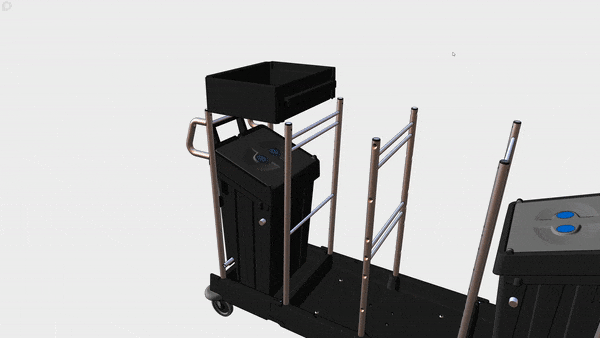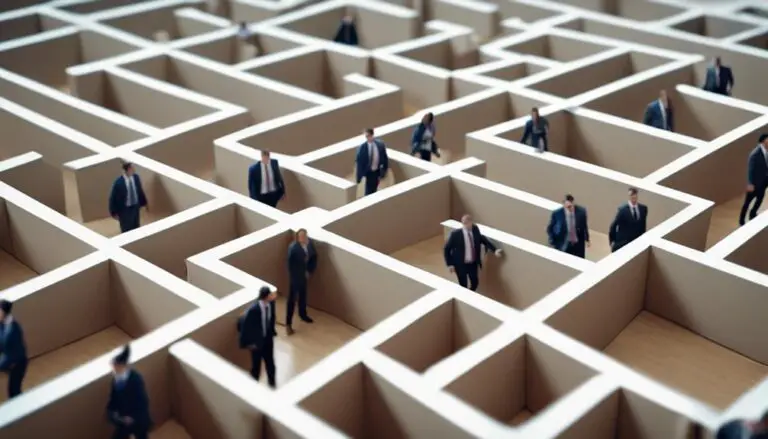Technical communication is an important part of any successful organization or business and can be the difference between success and failure, but what is it?
Technical communication is the process of conveying highly specialized information to a specific audience. It incorporates various methods such as writing, illustrations, diagrams, and graphical elements to explain complex topics accurately and concisely.
Technical communication can be used in a variety of contexts, such as product manuals, user guides, training materials, and more.
In this article, we will discuss what technical communication is, its characteristics and best practices for effective technical communication.
What is technical communication?
Technical communication is about effectively sharing technical knowledge, such as engineering and scientific information, through documents, webpages, computer-based training and other digital media.
Technical communicators use a set of methods to research and document technical processes or products.
They may put this information into various formats such as books, brochures and pamphlets or webpages for easy access by their audience.
Technical communicators also use a range of techniques such as writing or editing to create easily accessible information.
In addition, they may use tools like customer support materials or style guides that are part of a company’s technical communications department’s integrated strategy.
For example, Numatic, makers of the icon Henry vacuum cleaner range, have recently adopted the cadasio platform in order to create 3D interactive instructions for their range of products.

This is a great example of a company changing their practices to be able to share technical knowledge with a modern audience who are more use to using mobiles and tablets than printed instruction manuals.
What are the characteristics of technical communication?
Technical communication is a specialized form of communication that requires an understanding of the technical subject matter and the ability to convey it in a clear and concise manner. It has several key characteristics that make it unique from other forms of communication.
1. Clear and Effective Communication
Clear and effective communication is essential for success in both the workplace and personal life. It requires good grammar, spelling, punctuation, and sentence structure to be respected by readers.
Good communication skills are essential for success in the workplace because written communication is prevalent in most workplaces. Additionally, clear writing helps ensure that readers understand your message accurately without being distracted by grammatical errors or unclear wording.
2. Use of Technical Jargon
The use of technical jargon in technical communication can make it difficult for people who do not know how to use the language to understand and use the information.
As a result, readers may find it difficult to understand complex products or processes. This could lead to unsafe practices if they do not understand how to use a product properly.
Also, because technical jargon can be hard to understand even if you are familiar with it, it can make communication between different people more difficult.
3. Complexity of the Material
Technical communication can involve complex topics, such as science, technology, engineering and math (STEM). These subjects often require a high level of understanding and specialized knowledge to communicate effectively.
However, technical communication does not have to be complex. It can also involve simple topics such as how to use a new software program or how to fix a household appliance.
In these cases, the information being communicated is straightforward and easily understood by the reader without requiring extensive knowledge or expertise.
4. User-Friendly Layout
User-friendly layout helps to ensure that the documents created by technical communicators are legible, readable and understandable.
By making sure that the font is large enough to be read by a variety of audiences, using an easy-to-read font style that is appropriate for the content, and considering how readers may access your document (for example through print or digital avenues), technical communicators can create documents that are accessible to all users.
Additionally, incorporating visuals such as charts or diagrams into your writing can help enhance comprehension by presenting a lot of information in a graphic format.
In the Numatics example above you can see how some companies are making use of innovative products such as cadasio to create incredibly accessible and interactive documentation and are moving away from traditional forms of communication.
5. Variety of Media Used
Technical communication uses a variety of media, including paper documents, web pages, online help, computer-based training, digitally stored text and audio/video.
Paper documents are used for long-form content such as manuals or reports that require detailed information in a linear format.
Web pages provide an interactive platform for users to access information quickly and easily.
Online help provides step-by-step instructions on how to use software or websites effectively.
Computer-based training provides learners with interactive exercises that simulate real life scenarios in order to practice skills learned from lectures or textbooks.
Digitally stored text can be found in ebooks or online journals which allow readers to search through large amounts of information quickly and easily using keywords or phrases rather than page numbers.
Audio/video is used when it is necessary for the learner to hear instructions verbally rather than read them on paper or on screen.
Advancements in technology have led to many of these different elements being offered as a blended solution. We’ve already mentioned how the platform cadasio allows you to create interactive 3D instructions and long term it’s not a stretch to think there will be both virtual relatity and augmented reality solutions.
6. Research and Development
Research and development is the process of creating new technology or products, or improving existing ones.
It involves researching, testing and evaluating ideas, products and services in order to improve their quality and functionality.
Technical communicators play an important role in this process by providing information about users’ needs and preferences, designing effective user interfaces for applications or websites, conducting usability tests to identify any issues with design elements, developing documentation for products or services that explains how they work in detail.
Some of the characteristics of research and development in the context of technical communication include:
- collecting data about users’ needs;
- analyzing data to determine trends;
- designing effective user interfaces;
- creating documentation that explains how products work;
- conducting usability tests to identify issues with design elements;
- designing prototypes for new products or features before they are implemented into production systems;
- working closely with developers on software projects.
7. Accuracy and Updates
Accuracy and updates are essential for technical communication. Good writing should be clear, concise, and accurate in order to ensure that the reader understands the intended message.
Additionally, it is important to make sure that all facts are correct and up-to-date so that your document remains relevant.
Furthermore, accuracy ensures trustworthiness between the writer and reader—without it your credibility will be diminished.
Updates have been made a lot easier by the introduction of online technology, it allows for the publication of updated materials quickly and easily without the concern of reprinting costs.
What are the best practices in technical communication?
Technical communication is an essential skill for any professional in the modern world. It involves the use of clear, concise language to convey complex information in a way that is easily understood by readers.
In order to ensure successful technical communication, it is important to follow these best practices.
1. Use Plain Language
By using plain language in your writing, you can ensure that your document is legible and accessible to a variety of audiences.
You can increase the clarity of your content and make it easier for readers to understand what you are trying to say.
Additionally, using plain language can help eliminate any potential barriers caused by grammar mistakes or incorrect usage of words. This way, all possible audiences will be able to understand what you have to say.
2. Create a Clear and Concise Document
Make sure your writing is honest, clear, and accurate. Double check all the facts before you begin writing to ensure that nothing is incorrect.
Organize your ideas in a way that makes sense for the document you are creating and follow any guidelines given by your supervisor or teacher.
Outline your document using one of the many available methods (chronological, parts of an object, simple to complex/vice versa etc.) so that it flows well from beginning to end, and it is easier for you to write it in a logical manner.
Make sure every sentence is relevant and adds value to the overall message being conveyed; if not remove it as clutter will distract readers from what matters most!
3. Focus on the Needs of the Reader
By focusing on the needs of the reader, technical communicators can ensure that their documents are legible, readable, understandable and accessible to all users.
This will ensure that their documents are useful and can be easily understood by their target audience. For example, if you’re creating documentation for the public (e.g. an assembly instruction manual), then don’t go using overly technical terms.
On the other hand, if you’re writing documents for a professional, you’ll be asked to give them the information they need, using technical language where necessary.
By focusing on the needs of the reader in their writing process, technical communicators will be able to create documents for all audiences that are legible, readable and understandable.
It’s not just about the language used; you should also consider the delivery method. This will ensure documents are accessible to users who may need additional assistance such as screen reading devices or translation services.
4. Use Visual Aids when Possible
Using visual aids such as charts, diagrams and illustrations can help improve comprehension in technical communication.
Visuals provide a way for readers to quickly grasp complex information and organize it into a more manageable format.
They can also help make complex topics easier to understand by giving key points a more engaging format and providing context.
In addition, visuals can be used to show concepts that may be hard to explain with words alone. This helps readers understand what the document is all about.
In addition, the use of pictures can reduce the need for long explanations or instructions, because they show all the information at once, in a way that is easy to understand (e.g. Ikea or Lego assembly instructions).
5. Collaborate with Others
There are a number of other people that can add value to your project:
- Subject Matter Experts: These are people who have a deep understanding of the topic or product being documented. They can provide valuable insights into the content and help ensure accuracy.
- Technical Writers: Experienced technical writers can provide feedback on the structure, flow, and readability of your document.
- Designers: Designers can help create visuals that make complex topics easier to understand and add visual appeal to your documents.
- Editors: Professional editors can review your document for grammar, spelling, and other errors that may detract from its overall quality.
- End Users: End users should be consulted to ensure that the document meets their needs and is easy to understand and use.
6. Have a Clear Purpose
It is extremely important to have a clear purpose when writing technical documents. Good writing is based on having a purpose, and this helps the writer know how it should be presented and what information should be included.
Having a clear purpose also ensures that the document meets reader expectations and achieves its intended goal.
Good communication requires clarity, accuracy, completeness, attractiveness, considerate of all potential audiences and proper grammar usage. A clear purpose for your writing is the key to good communication.
In addition, having an effective purpose can help you identify any gaps in your knowledge or assumptions that may not have been considered before. This can lead to better results for all involved in the process.
7. Check Your Sources and Cite Them Properly
If you are referencing other it’s important to include accurate citations in case the reader wishes to learn more about them.
Gather your sources: Make sure you have all the information you need for your document by gathering any primary research or secondary sources that may be relevant.
Check your sources: Check each source carefully to make sure it is accurate and up to date, and cite any that you plan on using in your document accordingly (e.g., in APA format).
Cite properly: Make sure to include citations at the end of each paragraph or section that uses a source, as well as in the list of references at the end of your document if applicable (e.g., APA format).
Acknowledge all sources used: Make sure that all authors whose work has been referenced are properly acknowledged with credit given where due (e.g., “quoted from” or “referenced from”).
8. Keep a Document Management System
A technical communication document management system is important because it helps to ensure that the documents are accurate, easy to find and access, and clear in their message.
A good document management system, such as Microsoft Sharepoint, will also allow team members to collaborate on documents easily and track changes over time.
This ensures that everyone has access to the most up-to-date information and can quickly find what they need when they need it.
Additionally, having an organized system in place will help reduce the risk of losing important documents or information due to poor organization or misplacing files.
Finally, having a document management system allows teams to use digital technologies and specialized software more effectively as they can be used together for better productivity.
9. Adopt a Reporting Policy
Adopting a reporting policy can help in technical communication by providing guidance on how to report incidents or issues relating to a project or product.
This helps ensure that the information provided is accurate, consistent, and useful for everyone involved in the project.
It also ensures that any potential risks are identified and addressed quickly so as not to impact progress on the project.
Additionally, it can help reduce confusion or uncertainty about what should be reported and when it should be reported.
How Important Are Technical Communication Skills for a Project Manager?
Technical communication skills are essential for a project manager. Clear and concise communication ensures that the team understands project requirements and expectations. Project manager technical skills also facilitate effective collaboration with technical staff, streamlining the completion of tasks and ultimately leading to successful project delivery.
FAQs
What are the formats used in technical communication?
Technical communication formats include:
How-to Guides: Step-by-step instructions for completing a task or solving a problem.
Illustrations: Visual representations of concepts or processes, such as charts and diagrams.
Instructions for Use (IFU): Detailed instructions on how to use a product or service.
Journal Articles: Scholarly articles that explore topics in depth from various perspectives.
Online Help: Informative webpages that provide answers to common questions or troubleshooting solutions.
Quick References and Job Aids: Quick tips, hints and checklists designed to make tasks easier.
Technical Manuals: Detailed guides covering all aspects of product usage and maintenance procedures.
User Interface Text: Text written specifically for computer programs, websites, etc. in order to help users navigate more easily through menus/options/etc.
What type of editing is done in technical communication?
Technical editing involves the process of revising a draft to fine-tune it into its final form. It includes four main tasks: adjusting and reorganizing content, editing for style, editing for grammar and punctuation, and performing a mechanical edit.
To adjust and reorganize content, the writer should revise topics that need more attention or shorten other sections.
Good style makes writing more interesting, appealing, and readable; modern technical writing uses features such as headings, lists, graphics, and short sentences. Active voice is used in some scientific applications, but passive voice is used in most other writing.
To edit for grammar and punctuation, the writer should check their document for common word confusions or overly long sentences.
Finally, they can perform a mechanical edit which involves checking their document for correct grammar usage etc.
What type of data is used in technical communication?
Technical communication can be classified into two main types: written and visual.
Written communication includes documents, manuals, web content and other written materials.
Visual design is used to create visually appealing graphics, illustrations or other visuals that help communicate complex information more clearly.
Additionally, front-end web development involves coding websites in order to make them more user-friendly and accessible.
Technical communicators may also use usability testing to evaluate how users interact with products or systems and make adjustments accordingly.
What type of web development is used in technical communication?
Technical communication encompasses numerous web development activities, such as front-end programming, usability assessment, UX design, and others.
Front-end web development involves using programming languages to create interactive websites that are easy to use and visually appealing.
Usability testing involves testing a website or app with real users in order to identify any potential issues with navigation or functionality.
User experience design focuses on creating an enjoyable user experience through features such as intuitive navigation menus and clear call-to-action buttons.
What type of manuals are made in technical communication?
Technical communication deliverables can include a wide variety of manuals, such as how-to guides, instructions for use (IFU), instructor-led and eLearning training materials, journal articles and web-based product support.
Technical communication professionals also create user interface text, quick references and job aids to make detailed information more accessible.
The field also includes grants and proposals, information graphics and videos.
What type of software is used in technical communication?
Technical communication uses a wide variety of software to create, edit and distribute content. Some of the most common types of software used in the field include:
Grants and proposal software – Used to create documents such as funding proposals, grants and contracts. These programs help users organize their ideas into concise, professional documents while simplifying complex processes like budgeting and scheduling.
Information graphics – These programs allow users to create visual representations of information or data so that people can easily and quickly understand what is going on.
Instruction manuals – Instruction manual creation software helps writers create detailed step-by-step guides that explain how products work in an easy-to-follow manner for readers with no prior experience or knowledge on the subject matter being discussed.
Social media content creators – These programs are used by social media professionals to create engaging content for social media platforms like Facebook, Twitter, etc. They allow users to quickly format text into posts that fit within platform guidelines while also tracking analytics related to engagement metrics such as likes, shares, retweets etc.
What type of graphics are used in technical communication?
Technical communication can involve the creation of a wide variety of graphics, including:
Information graphics: These visual representations provide detailed information in an easy-to-understand format. They may include charts, diagrams, timelines and other types of visual representations.
Software self-help guides: These step-by-step instructions are used to help users navigate through complex software applications or systems.
Training programs: Technical communication professionals create training materials that teach employees how to use specific tools or perform certain tasks correctly.
Interactive graphics: Platforms such as cadaio allow you to take a complex CAD file and turn it into an interactive, animated, file that can be embedded on a website.
Sources
https://blogs.cadasio.com/news/numatic-cleans-up-with-cadasio.html





